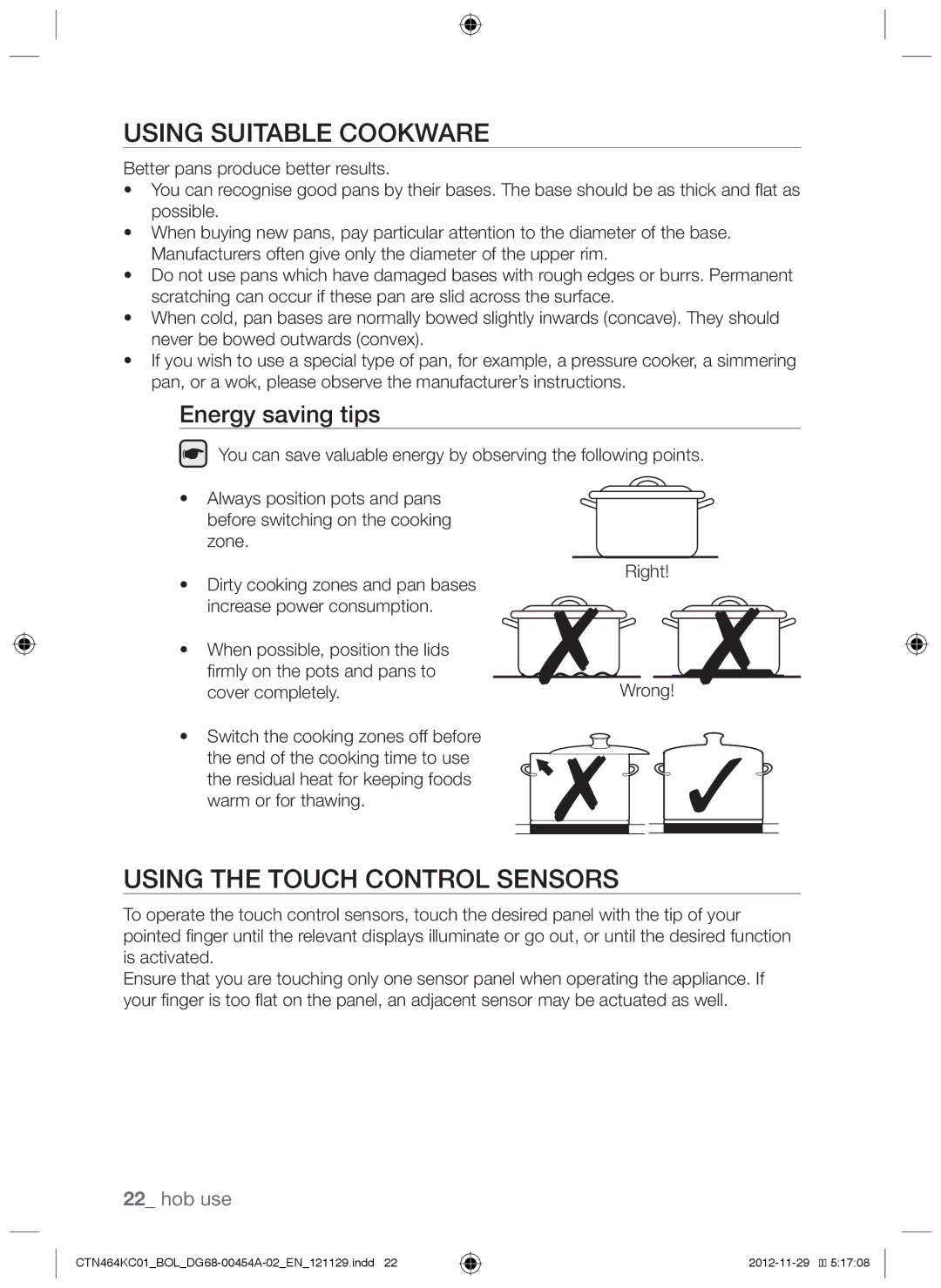
Using suitable cookware
Better pans produce better results.
•You can recognise good pans by their bases. The base should be as thick and flat as possible.
•When buying new pans, pay particular attention to the diameter of the base. Manufacturers often give only the diameter of the upper rim.
•Do not use pans which have damaged bases with rough edges or burrs. Permanent scratching can occur if these pan are slid across the surface.
•When cold, pan bases are normally bowed slightly inwards (concave). They should never be bowed outwards (convex).
•If you wish to use a special type of pan, for example, a pressure cooker, a simmering pan, or a wok, please observe the manufacturer’s instructions.
Energy saving tips
You can save valuable energy by observing the following points.
• Always position pots and pans before switching on the cooking zone.
•Dirty cooking zones and pan bases increase power consumption.
•When possible, position the lids firmly on the pots and pans to cover completely.
•Switch the cooking zones off before the end of the cooking time to use the residual heat for keeping foods warm or for thawing.
Right!
Wrong!
Using the touch control sensors
To operate the touch control sensors, touch the desired panel with the tip of your pointed finger until the relevant displays illuminate or go out, or until the desired function is activated.
Ensure that you are touching only one sensor panel when operating the appliance. If your finger is too flat on the panel, an adjacent sensor may be actuated as well.
22_ hob use
![]()
![]() 5:17:08
5:17:08
